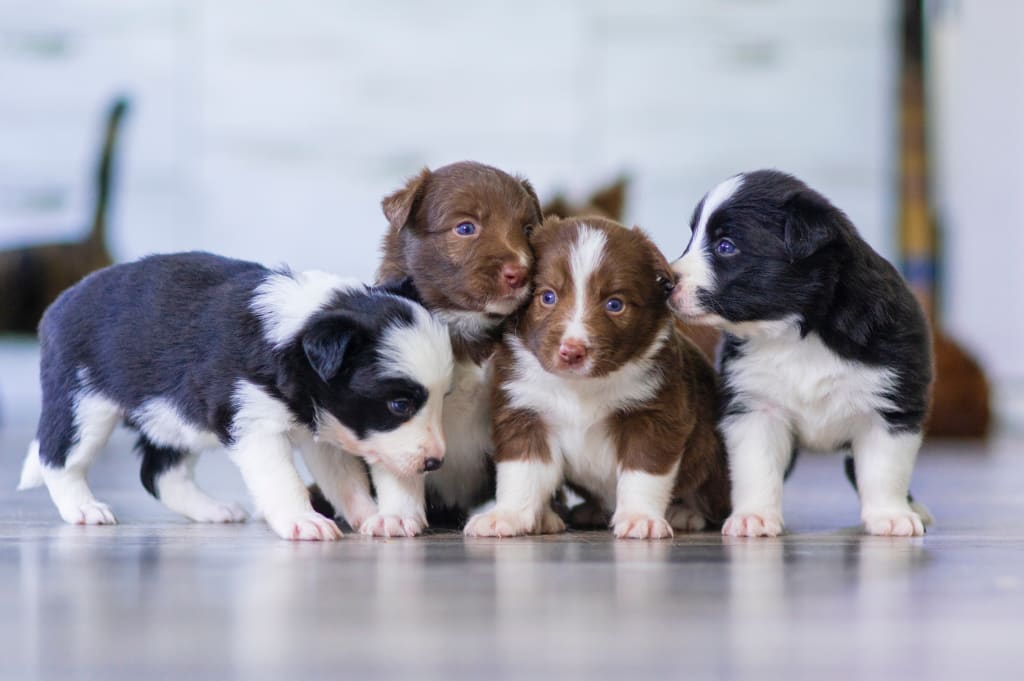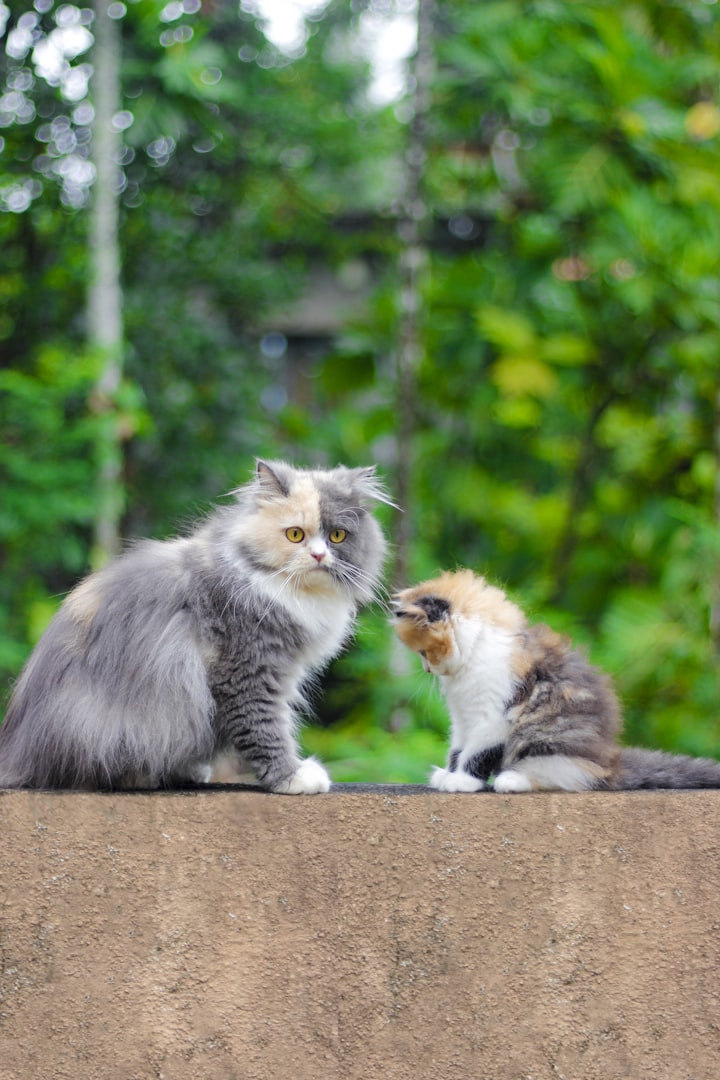
Training your puppy can be a fun and rewarding experience, but it can also be challenging at times. Here are some tips to help you get started:
- Start early: Puppies can start learning basic commands as soon as they come home, so don't wait to start training.
- Use positive reinforcement: Reward your puppy with treats, praise, and affection when they do something you want them to do. Avoid punishing your puppy, as this can cause them to become anxious and fearful.
- Be consistent: Choose a few commands that you want to teach your puppy, and use them consistently every time you give them a command. For example, always use the same word for "sit" and "stay."
- Keep training sessions short: Puppies have short attention spans, so keep training sessions short (5-10 minutes) and end them on a positive note.
- Practice makes perfect: Training is a lifelong process, so be patient and consistent. Your puppy will make mistakes, but with time and practice, they will learn.
- Socialize your puppy: It's important to expose your puppy to a variety of people, places, and situations so they can learn to be confident and well-behaved in different environments.
- Teach basic obedience: Some basic obedience commands that you can teach your puppy include "sit," "stay," "come," "down," and "heel."
- Potty training: Potty training is an important part of training your puppy. Start by taking them outside frequently (after meals, naps, and play sessions) and giving them plenty of praise and treats when they go potty outside.
- Leash training: Teaching your puppy to walk on a leash is important for their safety and your peace of mind. Start by getting them comfortable wearing a collar and leash, and then gradually increase the distance you walk with them.
- Chew training: Puppies are naturally curious and will chew on things to explore their environment. To prevent them from chewing on inappropriate objects, provide plenty of appropriate chew toys and redirect them to those toys whenever you catch them chewing on something they shouldn't.
Training your puppy takes time and patience, but with consistent training and positive reinforcement, your puppy will learn to be a well-behaved and loyal companion.
Correct! It's important to start training your puppy as soon as they come home, because they are more receptive to learning at a young age. Plus, starting early can help prevent problem behaviors from developing. When you bring your puppy home, it's a good idea to establish a daily routine for feeding, exercising, and training. This will help your puppy learn what to expect and can make the training process more smooth and successful.
Some basic commands that you can teach your puppy include "sit," "stay," "come," "down," and "heel." You can teach these commands using positive reinforcement techniques, such as rewarding your puppy with treats and praise when they perform the desired behavior. It's important to be consistent with your training, using the same words and hand signals every time you give a command. This will help your puppy understand what you are asking of them.
Training your puppy takes time and patience, but it can be a fun and rewarding experience for both you and your puppy. As your puppy learns new skills, you can gradually increase the difficulty of the tasks you are asking them to do. With consistent training, your puppy will become a well-behaved and loyal companion.
Yes, positive reinforcement is an effective and humane way to train your puppy. When you reward your puppy with treats, praise, and affection for performing a desired behavior, it reinforces that behavior and encourages your puppy to repeat it in the future. Positive reinforcement is especially effective because it focuses on rewarding good behavior, rather than punishing bad behavior.
On the other hand, punishing your puppy can cause them to become anxious and fearful, which can lead to more problem behaviors. Punishment can also damage the bond of trust between you and your puppy. It's important to remember that puppies are still learning and they may make mistakes, so it's important to be patient and understanding.
In addition to using treats and praise as rewards, you can also use toys and playtime as rewards for good behavior. This can be especially effective for puppies that are highly motivated by play. Just be sure to choose appropriate toys and play in a way that is safe for your puppy.
Overall, positive reinforcement is a powerful tool for training your puppy and building a strong, positive relationship with them.
Consistency is key when it comes to training your puppy. By using the same words and hand signals every time you give a command, you can help your puppy understand what you are asking of them. It's also important to be consistent in your use of rewards, so that your puppy knows exactly what they are being rewarded for.
For example, if you always use the word "sit" to ask your puppy to sit, and you always reward them with a treat when they do so, your puppy will quickly learn to associate the word "sit" with the reward of a treat. This makes it more likely that they will perform the behavior when you ask them to.
In addition to using consistent commands, it's also important to be consistent in your training overall. This means setting aside regular training sessions, using the same techniques every time, and providing consistent rewards for good behavior.
By being consistent in your training, you can help your puppy learn more quickly and effectively, and build a strong foundation for a lifelong relationship.
4.Keep training sessions short
It's true that puppies have short attention spans, so it's important to keep training sessions short and focused. Aim for training sessions that last 5-10 minutes, and gradually increase the length of the sessions as your puppy becomes more skilled at the tasks you are asking them to do.
It's also important to end training sessions on a positive note. This means praising and rewarding your puppy for their good behavior, and ending the session while they are still interested and motivated to learn. If you try to push your puppy too hard or for too long, they may lose interest and become resistant to training.
In addition to keeping training sessions short, it's also a good idea to vary the types of training you do with your puppy. This can help keep them interested and engaged, and can also help prevent boredom. For example, you might alternate between obedience training, agility training, and socialization activities during different training sessions.
Overall, it's important to be patient and understanding with your puppy, and to make training a positive and enjoyable experience for both of you.
Training your puppy is a lifelong process, and it's important to be patient and consistent as they learn new skills. Your puppy will make mistakes along the way, and that's completely normal. In fact, making mistakes is an important part of the learning process for puppies.
It's important to remember that puppies are still learning and they may not always understand what you are asking of them. They may need to repeat a task many times before they get it right, and that's okay. Be patient and encourage your puppy with treats, praise, and affection when they make progress.
In addition to being patient, it's also important to be consistent in your training. This means setting aside regular training sessions, using the same techniques and commands every time, and providing consistent rewards for good behavior. By being consistent, you can help your puppy learn more quickly and effectively, and build a strong foundation for a lifelong relationship.
Overall, training is a rewarding and enjoyable process for both you and your puppy. With time, patience, and practice, your puppy will learn new skills and become a well-behaved and loyal companion.
Socialization is an important part of training your puppy. It's the process of exposing your puppy to a variety of people, places, and situations so they can learn to be confident and well-behaved in different environments. Socialization helps your puppy learn how to interact with the world around them, and can help prevent fear and aggression towards new things.
It's especially important to socialize your puppy during the first few months of their life, as this is a critical period for their development. During this time, your puppy is learning about their environment and forming their socialization and fear imprints. If they don't have positive experiences during this time, they may be more prone to fear and aggression later in life.
There are many ways you can socialize your puppy, such as:
- Taking them to puppy socialization classes: These classes are designed specifically for puppies and are a great way to expose them to new people, places, and situations in a controlled environment.
- Introducing them to new people and animals: Invite friends and family over to meet your puppy, and take them to the park to meet other dogs and people.
- Visiting new places: Take your puppy on walks to different neighborhoods, and expose them to different types of environments (such as grassy areas, sandy areas, and concrete surfaces).
- Exposing them to new sounds and sights: Play different types of music for your puppy, and introduce them to new sights and sounds (such as fireworks, construction noises, and vacuum cleaners).
By socializing your puppy, you can help them become confident and well-behaved in different environments, and build a strong foundation for a lifetime of learning.
Teaching your puppy basic obedience commands is an important part of training them. These commands can help you communicate with your puppy, and can also help you manage their behavior in different situations. Some basic obedience commands that you can teach your puppy include:
- "Sit": This is a basic obedience command that you can use to ask your puppy to sit. You can use a hand signal (such as pointing to the ground) to help your puppy understand what you are asking them to do.
- "Stay": This command can be used to ask your puppy to stay in one place and not move. This can be helpful in situations where you need your puppy to stay put (such as when you are answering the door).
- "Come": This command is used to ask your puppy to come to you. This is an important command to teach, as it can be used to recall your puppy if they are in a potentially dangerous situation.
- "Down": This command is used to ask your puppy to lie down. It can be helpful in situations where you want your puppy to be calm and relaxed.
- "Heel": This command is used to ask your puppy to walk by your side on a leash. It's an important command to teach, as it can help you manage your puppy's behavior when you are out for a walk.
To teach these commands, you can use positive reinforcement techniques, such as rewarding your puppy with treats, praise, and affection when they perform the desired behavior. It's important to be consistent with your training, using the same words and hand signals every time you give a command. With time and practice, your puppy will learn these basic obedience commands and become a well-behaved and obedient companion.
Potty training is an important part of training your puppy, as it helps them learn to control their bladder and bowel movements and go potty in an appropriate place. Here are some tips to help you get started with potty training:
- Choose a designated potty area: Choose an area in your yard where you want your puppy to go potty, and take them to that spot every time you let them outside.
- Supervise your puppy: When you are home, supervise your puppy so you can catch them in the act of going potty. When you see them start to go potty, interrupt them by clapping your hands or saying a specific word (such as "outside"), and then immediately take them to the designated potty area.
- Reward your puppy: When your puppy goes potty in the designated area, be sure to give them plenty of praise and treats. This will reinforce the behavior and encourage your puppy to go potty in the designated area in the future.
- Use a crate: Crate training can be helpful for potty training, as puppies are naturally hesitant to go potty in their sleeping area. Use a crate that is large enough for your puppy to stand up, turn around, and lie down, but not so large that they can use one end as a bathroom.
- Be patient: Potty training takes time and patience, and your puppy will likely have accidents along the way. It's important to be consistent and patient, and to clean up accidents promptly to prevent them from becoming a habit.
Overall, potty training is an important part of training your puppy and can take time and patience. With consistent training and positive reinforcement, your puppy will learn to go potty in the designated area and become fully potty trained.
Leash training is an important part of training your puppy, as it helps keep them safe and allows you to control their behavior when you are out for a walk. Here are some tips to help you get started with leash training:
- Choose the right collar and leash: It's important to choose a collar and leash that fit your puppy properly. The collar should be snug enough that it can't be slipped over the puppy's head, but not so tight that it's uncomfortable. The leash should be long enough to allow your puppy some freedom to explore, but not so long that you can't control them.
- Introduce your puppy to the collar and leash: Before you start leash training, it's important to get your puppy comfortable wearing a collar and leash. Start by letting them wear the collar and leash around the house, and gradually increase the amount of time they wear it.
- Practice in a controlled environment: Once your puppy is comfortable wearing a collar and leash, start practicing leash training in a controlled environment, such as a fenced yard or a quiet room. This will allow you to focus on teaching your puppy basic obedience commands (such as "sit," "stay," and "heel") without distractions.
- Gradually increase the distance you walk: Once your puppy is comfortable walking on a leash in a controlled environment, gradually increase the distance you walk with them. Start with short walks around the neighborhood, and gradually increase the distance as your puppy becomes more skilled at walking on a leash.
- Be patient: Leash training can take time and patience, and your puppy will likely make mistakes along the way. It's important to be consistent and patient, and to praise and reward your puppy for good behavior.
Overall, leash training is an important part of training your puppy, and can help keep them safe and allow you to manage their behavior when you are out for a walk. With time and practice, your puppy will learn to walk on a leash and become a well-behaved and obedient companion.
It's natural for puppies to chew on things as they explore their environment and learn about the world around them. However, it's important to teach your puppy what they are and are not allowed to chew on, to prevent them from chewing on inappropriate objects (such as shoes, furniture, or household items). Here are some tips to help you with chew training:
- Provide plenty of appropriate chew toys: To prevent your puppy from chewing on inappropriate objects, make sure they have plenty of appropriate chew toys to choose from. Choose toys that are made of durable materials and are appropriate for your puppy's size and chewing strength.
- Supervise your puppy: When you are home, supervise your puppy to make sure they are not chewing on inappropriate objects. If you catch them chewing on something they shouldn't, gently redirect them to an appropriate chew toy.
- Reward good behavior: When you see your puppy chewing on an appropriate chew toy, be sure to praise and reward them with treats and affection. This will reinforce the behavior and encourage your puppy to chew on appropriate objects in the future.
- Manage your puppy's environment: To make it easier for your puppy to make good choices, remove any tempting objects (such as shoes or household items) from their reach, or put them out of sight. This will help prevent your puppy from being tempted to chew on inappropriate objects.
Overall, chew training is an important part of training your puppy, and can help prevent them from chewing on inappropriate objects. With consistent training and positive reinforcement, your puppy will learn what they are and are not allowed to chew on, and become a well-behaved and obedient companion.
About the Creator
event zee
I`m a Content Creator






Comments
There are no comments for this story
Be the first to respond and start the conversation.